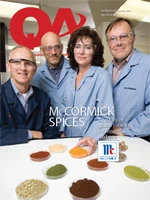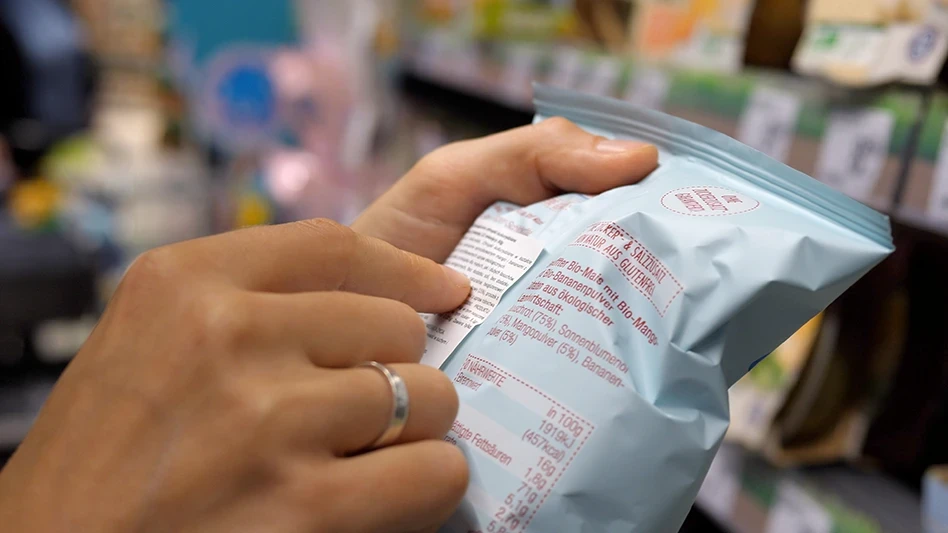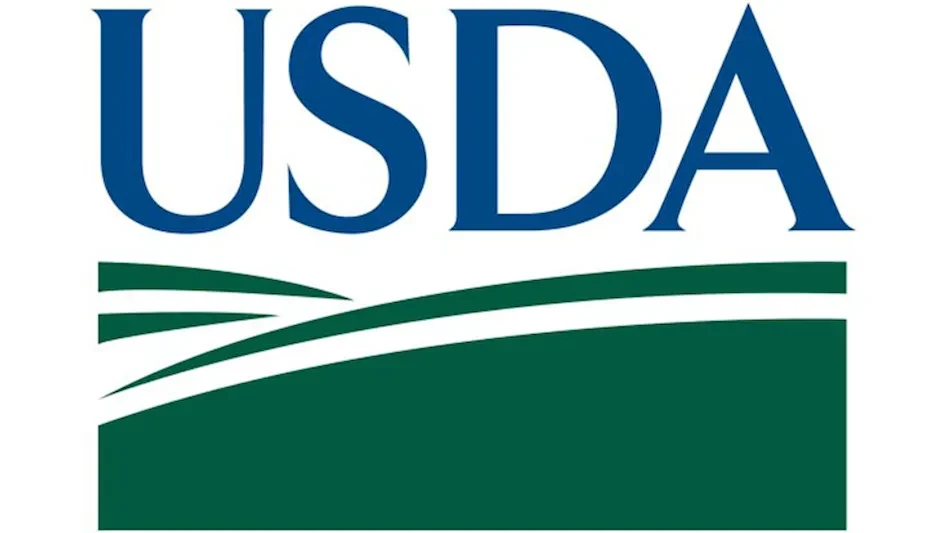
The story of spices is a tale of camel caravans, perilous voyages through unknown seas, the discovery of America, bloody wars, and the rise and fall of far-flung empires …
Spice trade has a long and savory history, responsible for the discovery of new lands and settling of entire continents. Of all the spices, black pepper—or Black Gold—was long considered to be the most valuable, reigning supreme as the "master spice."
In Ancient Greece and Rome, black pepper was used as a form of currency; in the fifth century its offering to conquerors twice spared the city of Rome; in the Middle Ages it was so valued, it was sold by the single peppercorn. And in the late 1800s, McCormick & Company, Inc., became a part of this rich history, sourcing quality pepper from the far reaches of the globe, and beginning its legacy of bringing spices into virtually every American kitchen.
"I’m not sure that anyone goes a day in this country without consuming some of our spices," said Roger Lawrence, Corporate Vice President of Quality Assurance and Regulatory.
Worldwide sourcing. Today black pepper is the top selling spice in the U.S, representing nearly 10 percent of all retail spice sales. But, in spite of its easy accessibility, this Black Gold—or any spice—is no less valuable in the flavoring of foods, nor less fraught with complexities of worldwide sourcing. In fact, still today, spices can be attained only through the global market, often from less developed countries where food quality and food safety generally are not up to the same standard as in more developed areas.
Yet throughout McCormick’s 120 years and global presence, it has maintained a trustworthy record of food safety for its products sourced from around the globe. "McCormick has a long history of sourcing from China, India, Indonesia and other developing nations that are characteristically more challenging for Good Agricultural Practices, Good Manufacturing Practices and adulteration-free product," Lawrence said. "Few companies have our know-how and experience in sourcing pure, wholesome and safe food products from so many countries around the world."
It is through this know-how and experience along with its Global Sourcing Program and supply chain principles of prevention and partnership that McCormick has maintained its high standards and enviable record of quality and safety.
In the Global Field. "Safe food starts with safe ingredients," Lawrence said. "We use a preventive approach, and you can only do that by going upstream in the supply chain," he said. "If you don’t do that, it is intervention, not prevention."
Such prevention begins with supplier sourcing to ensure that the spices are of the highest quality and safety from the field on. "Our Global Sourcing Program encourages our supplier base to create partnerships with farmers by providing them with a regular demand for high quality raw materials," Lawrence said.
The program was formalized 25 years ago, with a primary goal of developing relationships with the raw material providers and processors to increase transparency of source practices and McCormick’s ability to influence Good Agriculture Practices (GAPs).
Today, the program emphasizes the need for producing high quality, high value raw materials and educating farmers on ways to better manage the harvest, storage and integrity of their products through:
- joint ventures in India and Indonesia, key strategic alliances in major spice-growing countries, and a network of more than 150 other suppliers.
- vendor certification, in which a team works with suppliers to train them in the latest supply chain activities and auditing for GMP compliance.
- working at the source in developing countries to establish quality suppliers with strong ties to the farming community. This includes work with the American Spice Trade Association (ASTA) and the Indian Spices Board to develop supplier training programs.
- written supplier quality expectations, provided in a guidebook and including all applicable U.S. regulations, HACCP, pest control, sanitation, allergen management, traceability, etc. Guidelines also detail testing requirements to include chemical, physical, microbial and microsanitary testing and validation.
- quality global sourcing. "McCormick’s history of successfully procuring spices from the entire available universe over the life of the company has enabled us to achieve the optimum quality from year to year, given localized variations due to weather and economic/political instabilities," Lawrence said, adding that sourcing from multiple locations also facilitates securing of quantity and quality at the optimum price.
Because many of the spices are grown primarily in developing countries, the same degree of emphasis on quality and safety is not always inherent. "In their world, more time must be spent on providing the basics of life, and cosmetic quality is far harder to grasp than in our world," Lawrence said.
Thus, he said, "We have to show them how western quality standards are advantageous to them." That is, if they deliver quality and safety, they will not only get a better price for their product, but through the partnership, they also will have a continuing market for it.
Lawrence gave the example of oregano to illustrate the importance of quality practices throughout the supply chain. It is the leaf which provides the quality, taste and potency of oregano. "In theory, you could leave in parts of the plant stalk and stem that are difficult to remove, but those don’t have the flavor and strength," he said. Physical removal of the stalk and non-leaf plant parts while still in the source country is the most effective and efficient means of attaining a pure product. If it is not done until after it is chopped, it is much more difficult; and if not done before it is ground, it’s impossible.
Thus, for most of the spices, cleaning to U.S. import specifications is done in the source country, with some pasteurization treatment for pathogen kill, if available at origin. On arrival at McCormick, the product goes through a final cleaning and treatment to meet or exceed regulatory requirements and customer specifications. In most cases, McCormick prefers to grind spices at its spice milling operation. "When we grind spices we can control and assure purity, which is why we keep control of the manufacturing process," Lawrence said.
At Port of Entry. With increasing food safety requirements, both FDA and USDA have increased scrutiny at the ports of entry. "They’re doing much more due diligence and inspecting of spices," said Viva Roberts, Quality Assurance Manager.
In fact, Lawrence said, the new proposed food safety legislation is moving the country in the direction under which McCormick has already been operating. That is, a preventive approach which is comprehensive from farm to fork and has oversight of importers to hold imports to the same standards as domestic products. "We are already doing what the proposed food safety legislation will mandate all food companies to do."
Instead of simply stopping imports at the border, Lawrence said, there should be improvement in the source country programs, with all suppliers having food safety and food quality systems in place. "It is time that we move beyond interdiction at the border."
Through the Plant. Even with all McCormick’s preventive controls on the raw materials, the job is not done when a spice arrives at McCormick’s dock door. To attain a full understanding of this, we followed black pepper through the production process at the Hunt Valley Spice Mill where it is treated as the Black Gold of yesteryear and subjected to further preventive and proactive testing and quality and safety measures.
The controls begin the moment the peppercorns arrive at the Spice Mill which is protected against the entry of pests through building design and a strategic pest control program. The spices begin their journey through treatment, cleaning and processing when the bags are emptied into a feed hopper.
In fact, said Plant Manager Steven Parr, "From this point forward, it is never again touched by human hands." The pepper travels pneumatically through processing in a closed system with numerous quality and safety controls:
The closed system – Utilizing a closed system vastly increases the safety of the product as the potential of external contamination is virtually eliminated. In addition, Lawrence said, containing the process within pipes and tanks minimizes dust across the plant, increases sanitation, provides a better yield and, thereby, enables a better price for the customer.
Separation – Like all spices, the black pepper plant includes extraneous plant material such as stems and leaves. But the black pepper spice is milled only from the peppercorn. So the pepper goes through a number of steps to separate out these extraneous plant materials and contaminants (such as sticks and stones) employing sifter, aspirator, gravity table, destoner and sieve. Because of the variation in spices, and the parts of the plant from which they are derived, the specific cleaning and separation steps will vary according to the spice being processed.
McCormick’s cleaning process is intended to remove all extraneous matter while losing as little quality product as possible. "We may lose some good product in the process," Lawrence said. "But it’s better to lose more good in order to minimize the bad." However, the company does not simply accept loss of the good. Rather, Parr said, "Continuous improvement for us is to lower that percent of loss."
Metal detectors and magnetic separators – To ensure against metal fragments which may be brought in from the field, the spices run through multiple metal detectors and magnetic separators during processing, then through a final detector/separator and screening at packaging.
Pasteurization – After the peppercorns are cleaned, they flow into bulk tanks for pasteurization through a process which has been validated using protocols developed by the FDA and the American Spice Trade Association (ASTA).
Milling – Spices are ground according to specifications of the customer or McCormick consumer product. To ensure specifications are met, the spice is milled then sifted for size. After going through a typical sifting operation, a majority of the grind will be within specifications and ready for packaging. Small portions will be too coarse and put back through milling for further size reduction or too fine and transferred to other uses where size is less critical, such as a seasoning mix.
Training – Just as McCormick works to promote training of and for its suppliers, so too is training important throughout the process. Quality personnel are involved with employee training, so when they are assessing GMPs, they are working with those on the line to ensure workers know what to do—and why. "Training is our best defense," Roberts said. "If someone understands why they’re doing something, they’re more likely to do it." In addition, she said, "Contractors are required to be fully trained in the same programs in which our McCormick staff are trained."
In-house Lab. McCormick’s in-house laboratory is fully functioning to provide for all quality and safety tests, including full microbiological testing of raw and finished product. "Performing testing in-house provides quick turnaround of results; this allowing immediate corrective action as necessary," Roberts said. The microbiological laboratory is completely closed, not only from the plant, but also other lab areas, and is restricted to the specific technicians.
The lab also conducts quality tests on physical, chemical and flavor aspects of the spices. McCormick Spice Mill also has an advanced analytical laboratory, capable of verifying country of origin. "This is largely important based on a customer’s need for a specific flavor profile," Lawrence said. "We can ascertain the spice comes from a requested origin, thus providing a unique taste and sensory profile."
Similar analyses are conducted to ensure that a spice is what it is claimed to be. For example, oregano and sumac can be easily confused, and an unethical grower may attempt to put sumac in an oregano shipment to save money, Roberts said. "Other plant materials can be used as an economic adulterant, so we take precautions to make sure it is a quality product; that we are getting a pure product."
Lab technicians also regularly go out to the lines to ensure that HACCP parameters are calibrated, to pull samples for testing, and to conduct environmental monitoring, an aspect which is continually upgraded based on new science and information, Roberts said. Trend analyses of this monitoring as well as other auditing are conducted, with the results impacting the sanitation schedule and other relevant plant practices.
To the Customer. When a brand is as familiar to the U.S. consumer as is McCormick, flavor, appearance, quality, safety and consistency are not an option; they are an expectation. The home cook or culinary chef expects each shake of McCormick black pepper to deliver the same appearance, piece size, flavor, strength and safety.
McCormick has asked consumers what its brand means to them. The response: "I know I can depend on it. It will be the same every time," Lawrence said. "Consistency of the product and flavor from time to time—that’s what we are known for."
Though spice trading may no longer be a tale of camel caravans, voyages across unknown seas and the fall of far-flung empires, today’s spice provider faces its own world of challenges and perils in placing a safe, quality product in its customers’ kitchens.
Having had 120 years to ride the winds of the spice trading seas—sourcing ingredients on the global market; preventing intentional and unintentional adulteration from field to fork; processing for consistent quality and meeting of specifications—McCormick has refined its processes to produce a safe, high-quality, consistent product, while maintaining an efficient operation for optimum yield, price and brand trust.
It is a trust that is continually acknowledged throughout McCormick’s process, and evidenced by the signs posted just before the packaging lines: "The next inspector is our customer."
The author is Managing Editor of QA magazine. She can be reached at llupo@giemedia.com.

Explore the June 2010 Issue
Check out more from this issue and find your next story to read.
Latest from Quality Assurance & Food Safety
- FSIS to Host Virtual Public Meetings on Salmonella Framework
- Climate-Smart Soybeans Enter U.S. Market
- Yoran Imaging Introduces Thermal Imaging-Enabled System for Induction Seal Inspection and Analysis
- GDT Highlights Food Safety Solutions for Food Processing and Packaging Facilities
- FSIS Issues Public Health Alert for Ineligible Beef Tallow Products Imported from Mexico
- Wolverine Packing Co. Recalls Ground Beef Products Due to Possible E. Coli Contamination
- McDonald’s USA, Syngenta and Lopez Foods Collaborate to Help Produce Beef More Sustainably
- Divert and PG&E Announce Interconnection in California to Address Wasted Food Crisis





